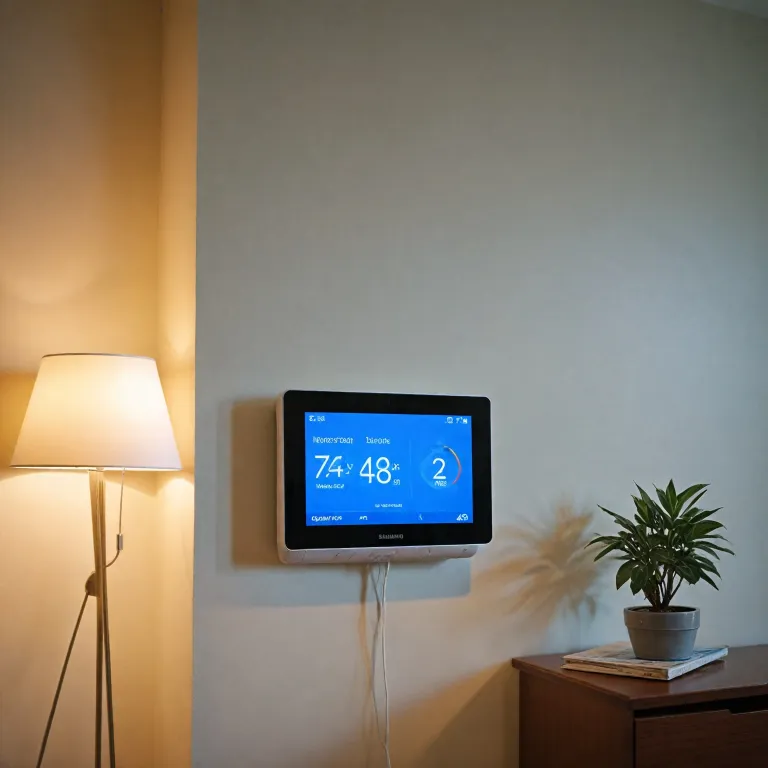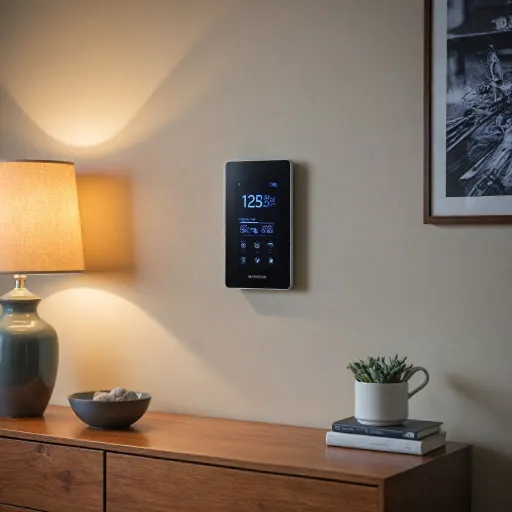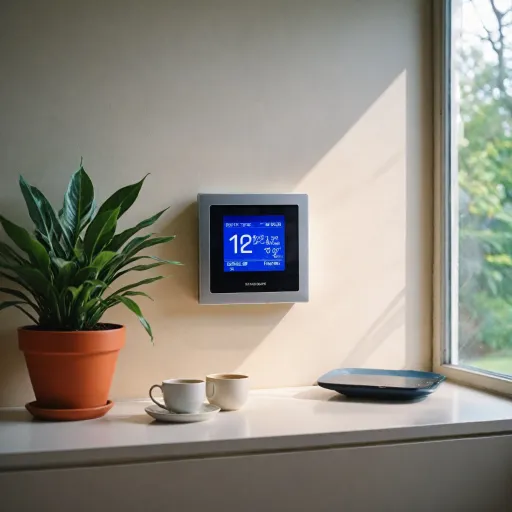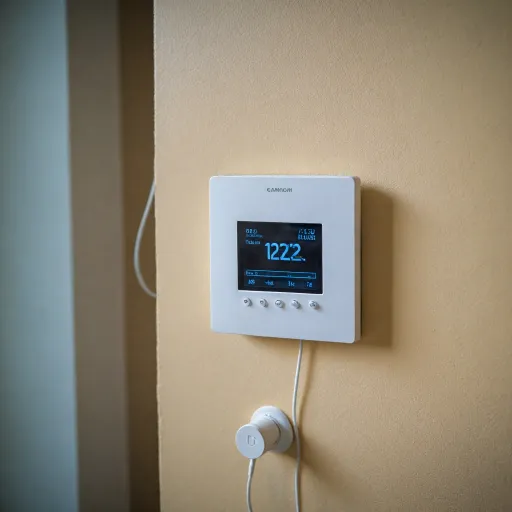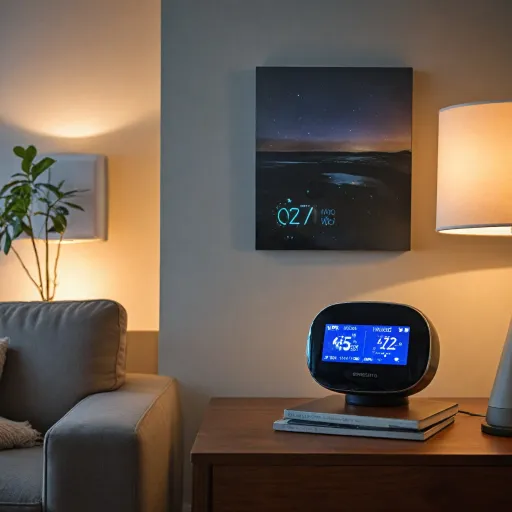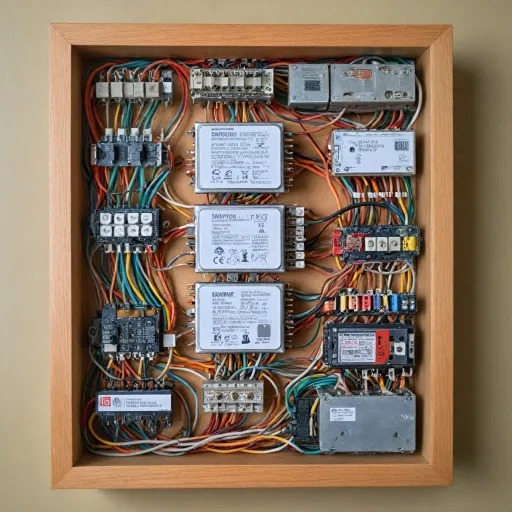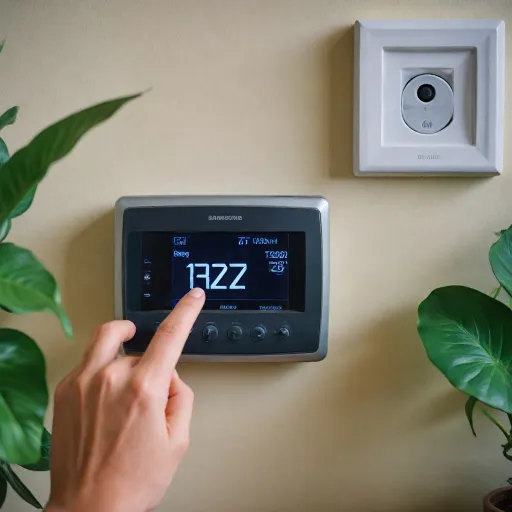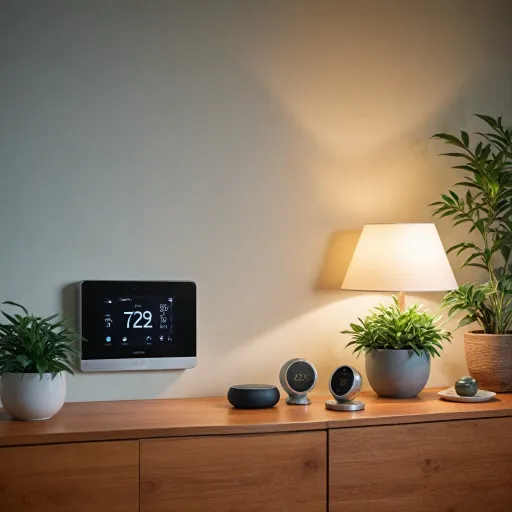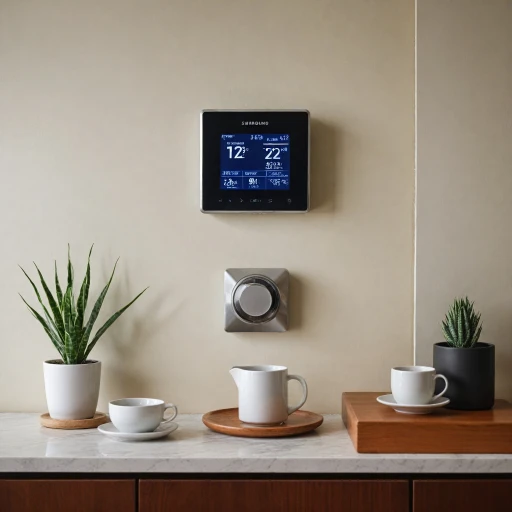
What is a Heat Tape Thermostat?
Exploring the Basics of Heat Tape Thermostats
If you're venturing into the realm of smart home technology, understanding the role of a thermostat controller is crucial, especially when dealing with heat tape thermostats. These thermostats are specifically designed to regulate temperatures in residential settings vulnerable to freezing conditions.
Primarily, a heat tape thermostat is used to ensure that water pipes, roof gutters, and other susceptible areas are protected from the damaging effects of extreme cold. They work by automatically controlling heating cables or tapes that wrap around these areas, providing the necessary warmth to prevent pipe freeze and icing issues.
Ideal for mitigating the risks associated with snow and ice buildup, heat tape thermostats are crucial for those living in areas prone to harsh winter conditions. Not only do they reduce the risk of costly repairs caused by frozen pipes, but they also help ensure the efficient operation of your heating system, thereby promoting energy savings.
As you delve further into choosing the right thermostat device for your home, factors like the type of heating cables, compatibility with your current home systems, and your budget will play significant roles. Installation and maintenance insights will equip you with the knowledge to keep these systems running effectively, while understanding potential challenges and their solutions will provide a comprehensive view of managing your smart heating system.
How Heat Tape Thermostats Work
Functionality and Mechanism of Heat Tape Thermostats
Understanding how heat tape thermostats operate requires delving into their main components and functionality. Essentially, these thermostats are pivotal for certain heating applications that aim to prevent freezing, such as keeping water pipes from icing over or ensuring roof gutters remain free from snow.
One crucial component is the temperature sensor. This element detects the ambient temperature and signals the thermostat to activate or deactivate the heating cables as needed. By regulating the flow of electric heat through heat cables, these systems maintain a consistent temperature, preventing freeze-ups.
Heat tape thermostats can be wall-mounted or integrated directly onto the pipes or surfaces requiring heating. The thermostat comes with a variety of controls, often including an easy-to-read digital display or even a simple dial for temperature control. Before using, always read about the role of a thermostat controller to ensure full understanding of operation and suitability to your needs.
When the temperature falls below a preset point, the thermostat activates the heating cables or trace tape. This setup not only thwarts freezing but also aids in preventing damage caused by expanding ice, such as burst pipes or compromised roofs.
Moreover, some advanced models of heat tape thermostats come with added features like snow sensors, making them highly suitable for applications like roof gutter heat tape or cable roof systems. These ensure that snow and ice don't accumulate, offering radiant solutions for maintaining the integrity of buildings in cold environments.
By selecting the appropriate heat tape thermostat, users can ensure easy installation and maintenance, which we'll explore further, alongside solutions to common challenges that might arise during their use.
Benefits of Using Heat Tape Thermostats
Why Embrace Heat Tape Thermostats for Optimal Winter Comfort?
In the realm of heating solutions, the advent of heat tape thermostats has been a game-changer, offering significant advantages over traditional methods of freeze protection. Let's delve into why incorporating a heat tape thermostat can transform your home into a warm haven during the colder months.
First and foremost, heat tape thermostats offer unparalleled temperature control and efficiency for protecting pipes and roof gutters against freeze. By automatically regulating the heat output based on environmental conditions, these thermostats ensure that just the right amount of heat is delivered when and where it's needed. This not only prevents freezing but also conserves energy, translating to reduced utility bills.
Furthermore, these devices are particularly effective in managing icing situations on roofs. By leveraging heat cables, they provide consistent and reliable snow and ice protection, mitigating damage that could lead to costly repairs.
Another notable benefit of adopting heat tape thermostats is the convenience of easy heat control. Thanks to modern advancements, these thermostats often come equipped with user-friendly interfaces, allowing homeowners to program settings and monitor performance with ease. This ensures that maintaining optimal winter conditions is a hassle-free task.
Additionally, these thermostats offer compatibility with various heating solutions. Whether you're using cables from Frost King or Easy Heat, or installing a cable kit for your water pipe or roof, heat tape thermostats integrate seamlessly, providing a cohesive and comprehensive solution.
As you navigate the landscape of smart thermostats, understanding the transformative benefits of heat tape options can guide your decision-making process. For more on setting up smart thermostats, explore this step-by-step guide to enhance your home's energy efficiency and comfort.
Choosing the Right Heat Tape Thermostat for Your Home
Selecting the Optimal Heat Tape Thermostat for Your Needs
When choosing a heat tape thermostat for your home, several factors come into play to ensure efficiency and cost-effectiveness. With a variety of options available in the market, understanding your specific requirements is crucial. Here’s a guide to help you make an informed decision:- Assess Your Environment: Determine where you intend to use the heating cables, whether it’s for roof de-icing, pipe freeze protection, or radiant heating solutions. Each application may require a different type of heat trace cable and thermostat controls.
- Consider Temperature Ranges: Evaluate the temperature control needs of your installation area. If you're dealing with severe winter conditions, you’ll need a thermostat with precise regulation capabilities to prevent freeze and icing issues effectively.
- Compatibility with Heating Cables: Ensure the thermostat is compatible with the heat cables you plan to use. Some thermostats are designed to work with specific cables, such as EasyHeat or Frost King, to provide optimal heat distribution.
- Energy Efficiency: Look for a thermostat that offers efficient energy use. Some advanced models allow for automatic adjustments based on temperature readings, reducing unnecessary electric heat consumption.
- Ease of Installation: Opt for a thermostat that's easy to install, especially if you’re planning a DIY setup. Most thermometers come with a cable kit and user manual. However, professional installation might be required for more complex systems.
- Budget Considerations: Compare prices and features across different models. While some heat trace solutions might be costly, they often offer long-term savings by preventing costly repairs from pipe freeze or roof gutter damage.
- Manufacturer Reliability: Research reputable solutions companies like Raychem or Heat Trace Ltd., known for providing reliable and durable products, which can ease installation and minimize maintenance needs.
Installation and Maintenance Tips
Proper Installation and Upkeep for Optimal Performance
When it comes to installing heat tape thermostats as part of your smart home setup, there are several key considerations to ensure your system functions efficiently and effectively, especially when dealing with heat cables for pipe freeze protection or preventing roof icing. Start by reading the installation manual provided with your heat tape to fully understand how it interacts with your other heating components, like cables or control panels. Installation is generally straightforward, but attention to detail can prevent issues down the line.- Select the Right Cable Type: Depending on the location, whether it’s under your roof gutter or along a vulnerable water pipe, choosing the appropriate heating cable like those from Frost King or other reliable solutions is crucial for optimal freeze protection.
- Secure Cables Properly: When installing heat cables or radiant solutions, secure them tightly along the desired path without crossing or overlapping to prevent overheating. Most heating cables, like the easy heat kits, are designed with this in mind, but double-check instructions for your specific model.
- Temperature Controls and Regulation: Make sure your thermostat is correctly configured to control the temperature as necessary, adjusting for seasonal changes in snow and icing conditions. A well-calibrated thermostat ensures efficient energy use, maintaining a balance between saving electricity and preventing freeze damage.
- Regular Maintenance Checks: Conduct regular maintenance checks, especially in the colder months. Inspect the cables for any visible damage and ensure the thermostat is responsive to changes in temperature. Sometimes issues can arise from a simple misconnection or a break in the cable, which are easily fixed with regular inspection.
Common Challenges and Solutions
Addressing Common Issues with Heat Tape Thermostats
While heat tape thermostats are designed for efficiency and convenience, it's not uncommon to encounter a few hiccups along the way. Understanding these challenges and their solutions can make a significant difference in maintaining optimal performance.- Temperature Regulation Problems: If your heat tape thermostat isn't maintaining the desired temperature effectively, it could be due to faulty sensors or a miscalibration issue. Inspect the sensors for any damage or displacement, and consult the user manual to recalibrate the thermostat settings if necessary.
- Faulty Cable Performance: The performance of heat cables and heating cables is crucial. Check for any signs of wear or damage along the length of the cable. Ensuring proper installation and routine checks can prevent potential hazards.
- Icing on Roof or Pipes: Persistent icing on roof gutters or water pipes might indicate an issue with the heat trace system. Verify that the heat cables are properly fitted and have appropriate contact with the surface they're meant to protect. Additionally, inspect the control settings to confirm they're adapted to your regional climate conditions.
- Thermostat Malfunction: If the thermostat controls are unresponsive or display errors, a power issue might be at play. Ensure the thermostat is connected to a reliable power source or consider resetting the device. This could resolve minor glitches.
- Electrical Connections: Loose or corroded connections can impair the thermostat's functionality. Regularly inspect and tighten any connections, taking care to power off the system before working on it.
- Pipe Freeze Protection: Even with heat tape installed, extremely low outdoor temperatures can overpower the system. Increase the thermostat's temperature settings or add an additional layer of insulation to the pipes if necessary to enhance freeze protection.
- Cost of Running: Concerns about the cost of running heat tape thermostats can be managed by setting a schedule for operation efficiency. Doing so during peak cold hours might strike a balance between comfort and economy.
